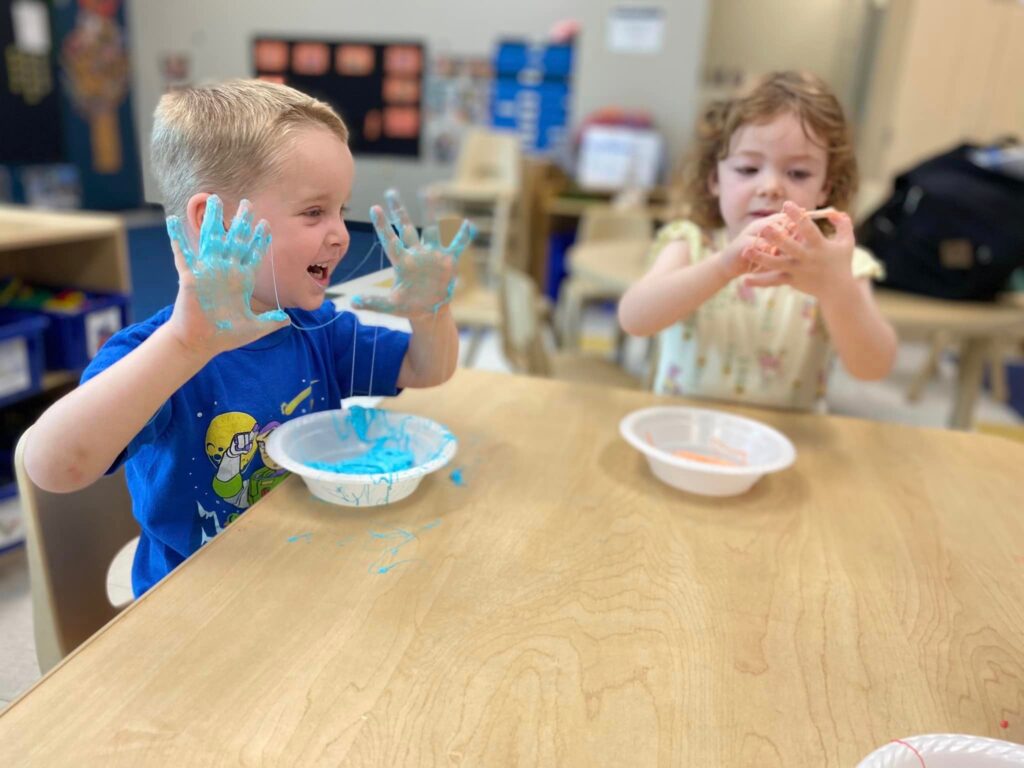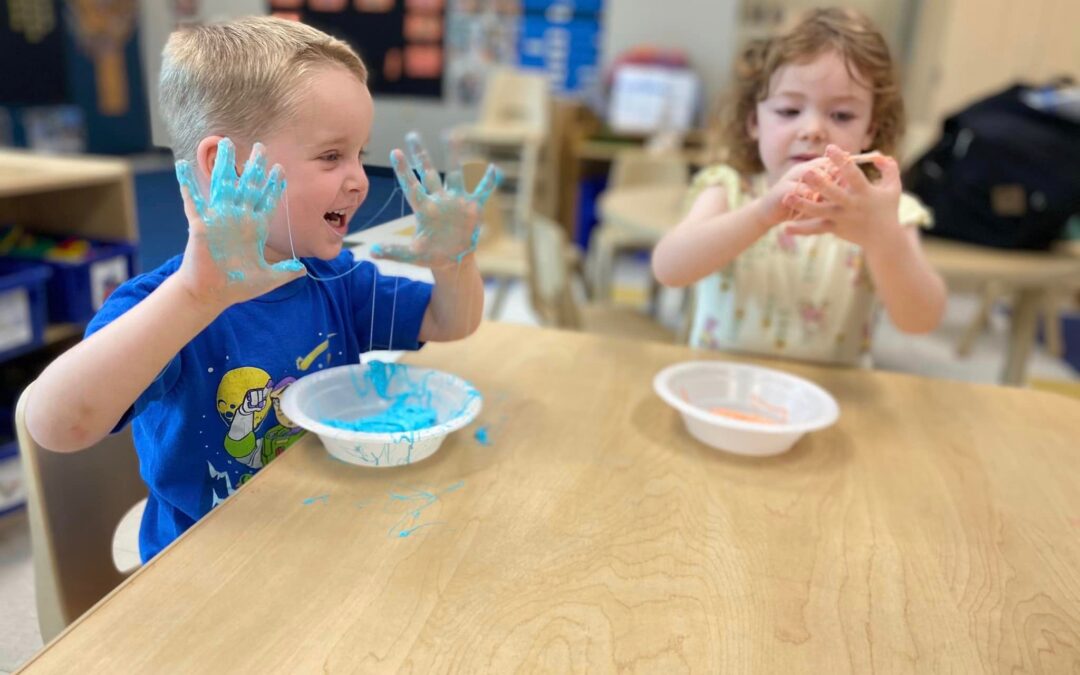By Katie Whalen, Teaching Strategies
Messy play can feel intimidating for teachers and families of young children. For some, paint-covered hands, muddy boots, and drippy glue can instantly trigger tense shoulders and clenched teeth. Although many people can relate to the reality of engaging in messy play with young children, the truth is messy play is deeply beneficial for children’s growth and development and, with some thoughtful consideration, can be enjoyed and valued by adults as well.

“Messy play” is any type of play that may cause children to “get dirty” but allows them to explore sensory materials and their properties in open-ended ways. This includes experiences such as pinching clay, creating mud pies, pouring sand, and mixing paint by hand. Messy play offers children opportunities to strengthen their approaches to learning as they make decisions, expand on ideas and plans, form connections, and engage freely and creatively.
Recognizing the extensive benefits of messy play and thoughtfully communicating with children’s families can help you embrace muddy hands and paint-covered smocks in your program or classroom this fall.
1. Evokes Creative Thinking and Builds Independence
Unstructured messy play is essential for young children to build resiliency and independence. Playing with a medium such as mud or clay provides children with opportunities to problem solve, persist, and focus without adults leading or taking over their play. When children make decisions on how to interact with media, their connection to the process deepens and their critical thinking skills are engaged.
2. Nurtures a Sense of Confidence

Messy play is engaging for children of all developmental levels, as there is no wrong way to work with the materials. Children can become deeply involved in exploring without any dependence on an end “product,” as the quality of their experience is not driven by a predetermined outcome. Rather, children can relish in the process of their self-directed explorations, as messy materials offer a variety of ways to communicate ideas and feelings. Trusting children to take the lead invokes feelings of ownership and pride while sending the message that their ideas and contributions are both valued and respected.
3. Enriches Each Domain of Development and Learning
When children engage in messy play, they use skills from each domain of development and learning, including social–emotional, physical, language and literacy, cognitive, and mathematics.
- Working together to create soapy foam supports cooperation, collaboration, and idea sharing.
- Pinching clay with fingers and jumping in puddles strengthens both fine-motor and gross-motor coordination.
- Describing the consistency of finger paint or the smell of “flower petal soup” empowers children to use descriptive language.
- Pouring water and sand through funnels encourages children to persist as they test cause and effect relationships.
- Counting the number of twigs added to each mud pie or setting the table for a mud tea party invites children to use number concepts.
4. Reduces Stress and Sparks Joy
It is no secret that the circumstances of the past few years have placed an added amount of stress on young children. Playing with materials that appeal to the senses, such as sand, water, or mud, as well as being immersed in nature, can be an instant mood booster and stress reliever for both children and adults.


Read Article from it’s original source below:

